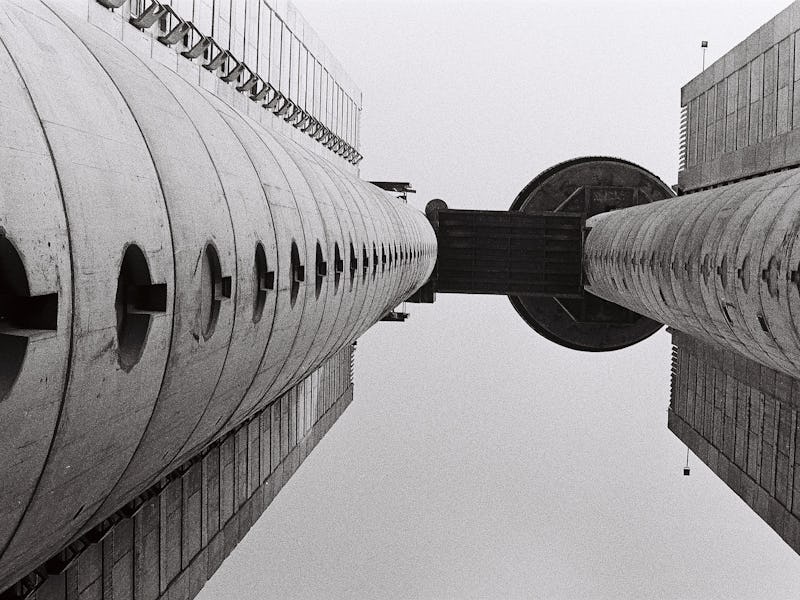Proof Architecture Alters How We Think Will Alter How We Think About Architecture
All those church builders were right. But can we reverse engineer an uplifting building?

Throw a couple psychologists, an evolutionary neurobiologist, and a philosopher in a room together with a heap of literature for long enough, and, eventually, out they will come with a theory. A new paper offers just that, a new way to consider our physical surrounding based on the propositions that the buildings, cities, and other spaces we inhabit fundamentally alter our experience of reality. Put another way, the new theory proposes that the world we build for ourselves is destined to alter us. We both construct and are constructed.
The researchers used two psychological concepts to discuss the effects of environmental influence: egocentrism and allocentrism. Egocentric world descriptions relate everything to the self. (“I live about 30 minutes, by train, from Manhattan,” for instance.) Allocentric world descriptions, on the other hand, relate everything to another thing. (“Bed-Stuy, Brooklyn, is about 30 minutes away from Manhattan by train.”) Allocentric outlooks remove the self from the equation and take a more abstract look at the relationship between things.
And, in effect, the researchers just embraced an extreme version of allocentric thinking. They removed the immediacy of their own experiences from the world and looked at how the environment affected human perspectives. They found that mankind’s centuries-old suspicion that architecture, for instance, effects decision making is likely true.
Here’s the way to consider their allocentric thought ee. “Several species may be adapted to urban environments,” the researchers write: “city spiders are larger, urban rivers salmon are smaller, city earthworms are more tolerant to metals, urban plants disperse fewer seeds.” We therefore ought to assume, the academics write, that we, too, are evolving and adapting to, say, urban environments: “If such human-mediated ecosystem changes lead to rapid changes in the course of evolution of other species, then recent changes have likely been occurring in our species, too.” Some studies have even demonstrated that, for instance, taxi drivers’ hippocampi — which are, in part, responsible for consolidating memories from short-term to long-term — are larger than those of their less-navigation-savvy passengers.
In addition, the researchers note, past studies have demonstrated the effects of confinement on humans’ experiences of reality. One type of confinement is a prison cell, another is a spacecraft on its way to Mars. The latter effects have actually been studied — spacecraft confinement simulated and voluntary, of course — and show that, for instance, “distance estimation and size perception” change due to “the combination of a restricted environment and microgravity.” Confinement disorders, such as claustrophobia and agoraphobia, can result from skewed understandings of confinement and spatiality. In general, “the lack of mobility” in relatively confined areas “could also impair perspectives of the social and emotional self,” the researchers hypothesize.
But these are hyperbolic examples that aim to show both that and how extremes can fundamentally change who we are. The researchers go on to ask the logical next question: “How might design influence spatial cognition directly, and (perhaps) social cognition indirectly?” If we may agree that architecture and urban design influence our experience of space — and a single glance up at the One World Trade Center ought to confirm that hypothesis — then we may also agree that it’s worthwhile to investigate this further, to study whether our experience of space in turn influences what sort of people we become.
Urban planners and architects alike, the academics argue, should therefore consider more than just aesthetics:
“Optimizing spaces for the wellbeing of all is a critical job for architects and urban planners. This paper… demonstrates how architecture might take guidance from data about how the mind works from fields such as neuroscience, psychology, philosophy, anthropology, and behavioral biology.”
The researchers then begin to speculate on how our urban environments might be improved, how in particular architects can restructure space to benefit mind. One floated idea is that spaces should empower people. “These three areas of ‘control,’ ‘overcoming helplessness,’ and maintaining ‘freedom to act’ are areas in which spatial planning and design can perform a key role.” Again, the extremes illustrate the point: A hospital room gives a patient very little feeling sense of power; a roof deck, though, gives one a sense of authority.
The paper ends on a rather empowering note: “Where we are might mold who we are, but given our ability to shape the environment, we can play an active role in the development of the self.” That sentence alone may forever recontextualize the old debate over form and function. Function, it turns out, is us.